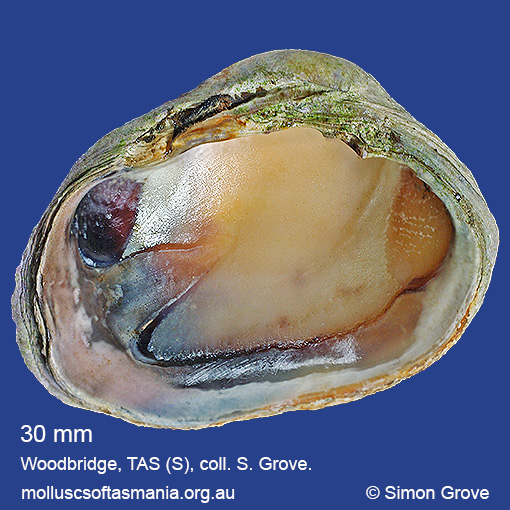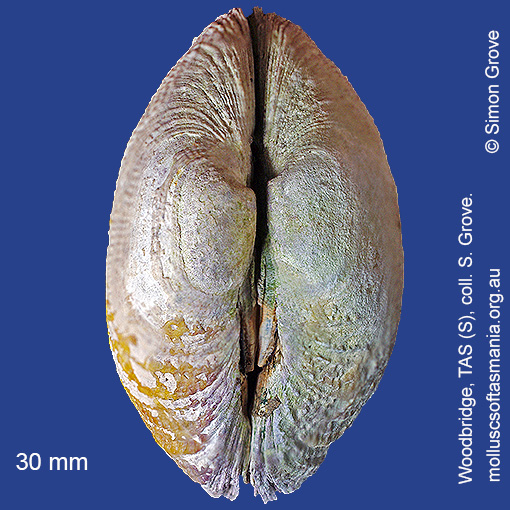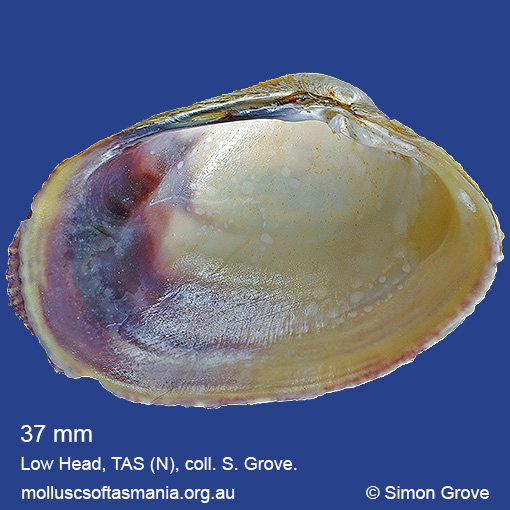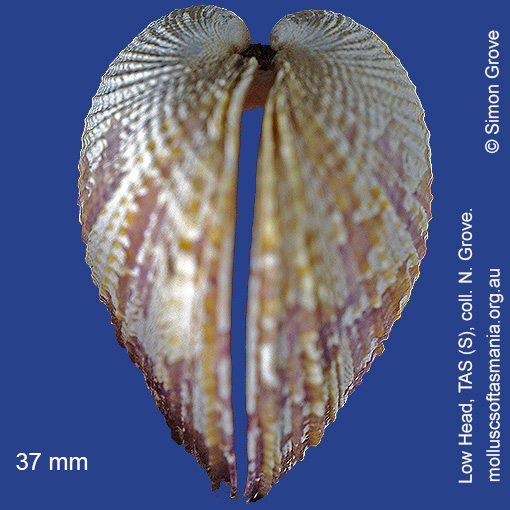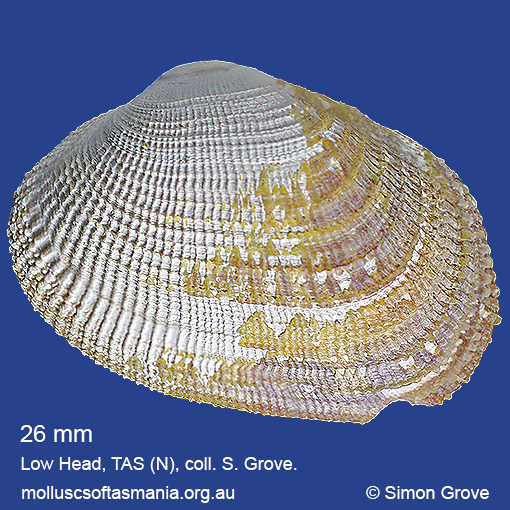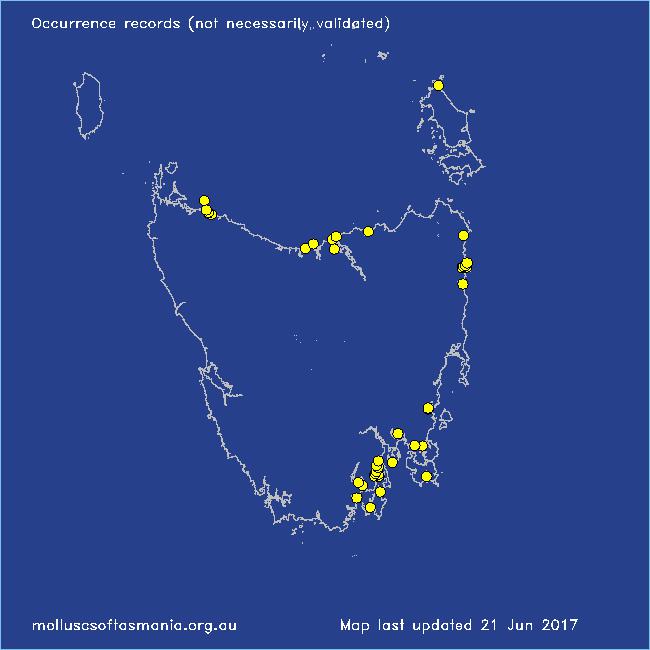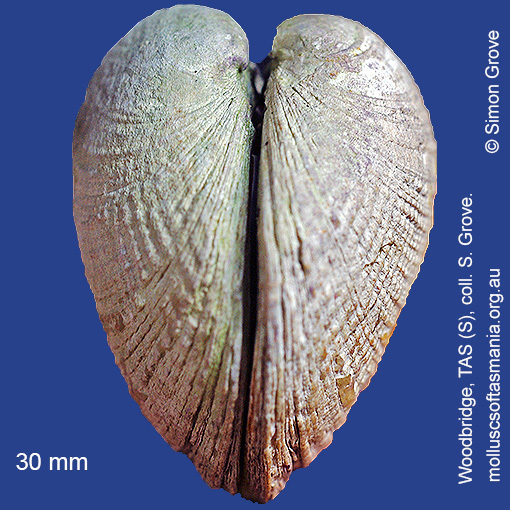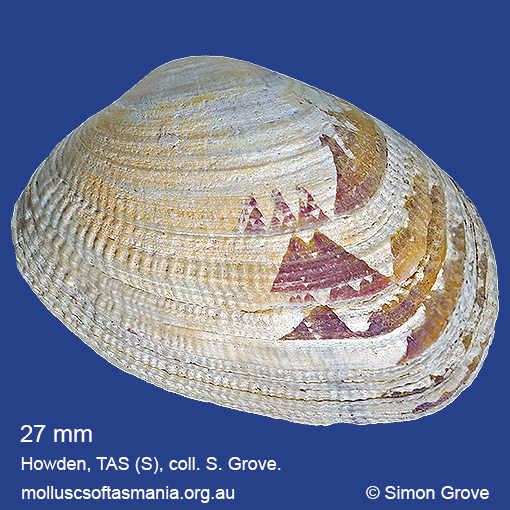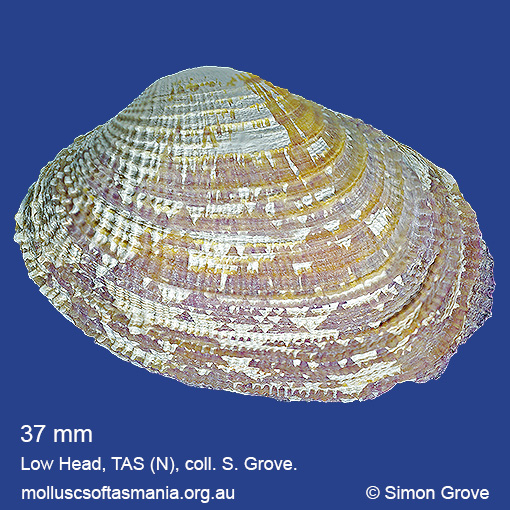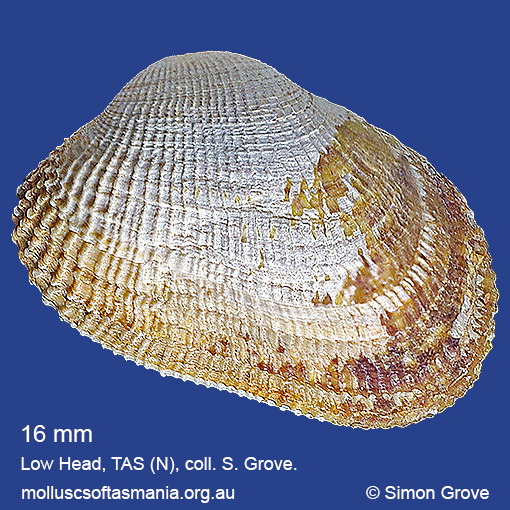
Veneridae – Tapetinae: Irus (Irus) crenatus (Lamarck, 1818) (‘scaly boring-venus’)
Synonym(s): crenatus Lamarck, 1818 brevis Quoy & Gaimard, 1835 serrata Reeve, 1843.
Typical shell-length 40 mm. Extent of purplish-brown surface flaking varies. Less elongate than typical I. crebrelamellatus, but it is likely that the two species are merely variants of a single species whose shape is determined by the substrate in which the animal grows. Lives subtidally embedded in hard sediments such as compacted mud and soft rock. Native. Endemic to southeastern and southwestern Australia (NSW, TAS, VIC, SA and WA). In Tasmanian waters, this is a widespread species, but highly localised and seldom common; most likely to be found in the SE.
Classification
Class: Bivalvia
Subclass: Heterodonta
Order: Veneroida
Superfamily: Veneroidea
Family: Veneridae
Subfamily: Tapetinae
Genus: Irus
Localities for Irus crenatus
Ansons Bay
Bellingham
Black River Beach: northern end
Black River Beach: southern end
Coningham: foreshore
Connellys Bay
Dunalley (unlocalised)
East Devonport: Moorland Beach
Flinders Island: Northeast River: mouth
Georges Bay: Akaroa: foreshore
Georges Bay: Humbug Point
Georges Bay: Moulting Bay: Bayview
Georges Bay: St Helens: foreshore
Georges Bay: Stieglitz: foreshore
Georges Bay (unlocalised)
Greens Beach: main beach
Hawley Beach: foreshore towards Point Sorell
Herlihys Bay: coast to E
Howden: foreshore
Kettering: Oyster Cove
Kettering: Trial Bay
Low Head (unlocalised)
Midway Point: Penna Beach
North Bruny Island: Apollo Bay
North Bruny Island: Roberts Point
Orford: Millingtons Beach
Orford: Prosser River: mouth
Orford: Raspins Beach
Peggs Beach (unlocalised)
Peggs Beach: western end
Port Arthur: Point Puer & beach
Port Cygnet: Sandrock Bay
Port Esperance: Stringers Cove
Scamander: Steels Beach
Snug Beach
South Arm: Hope Beach: southern end
South Bruny Island: Mickeys Bay
South Bruny Island: Simpsons Bay
Stanley: Halfmoon Bay
Tamar River: West Arm
Tasmania (unlocalised)
Woodbridge: foreshore & Birchs Point

